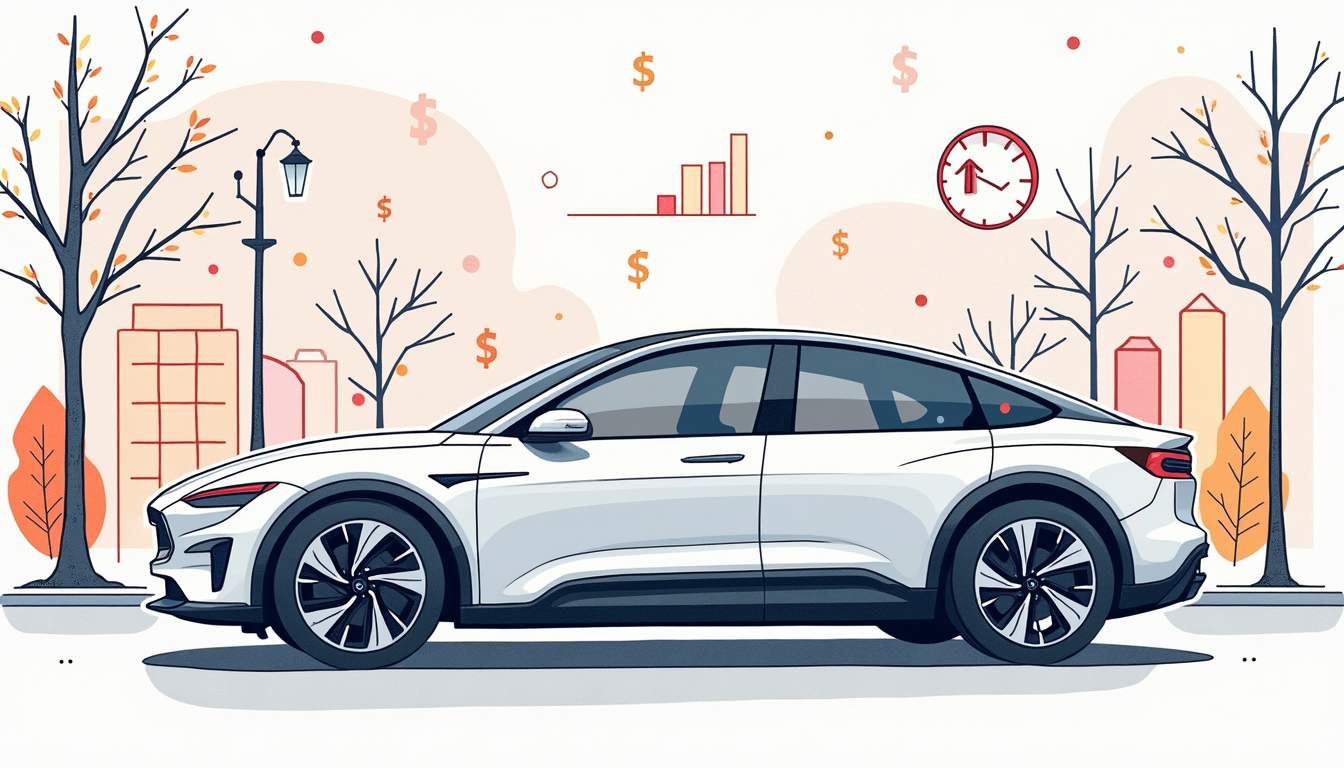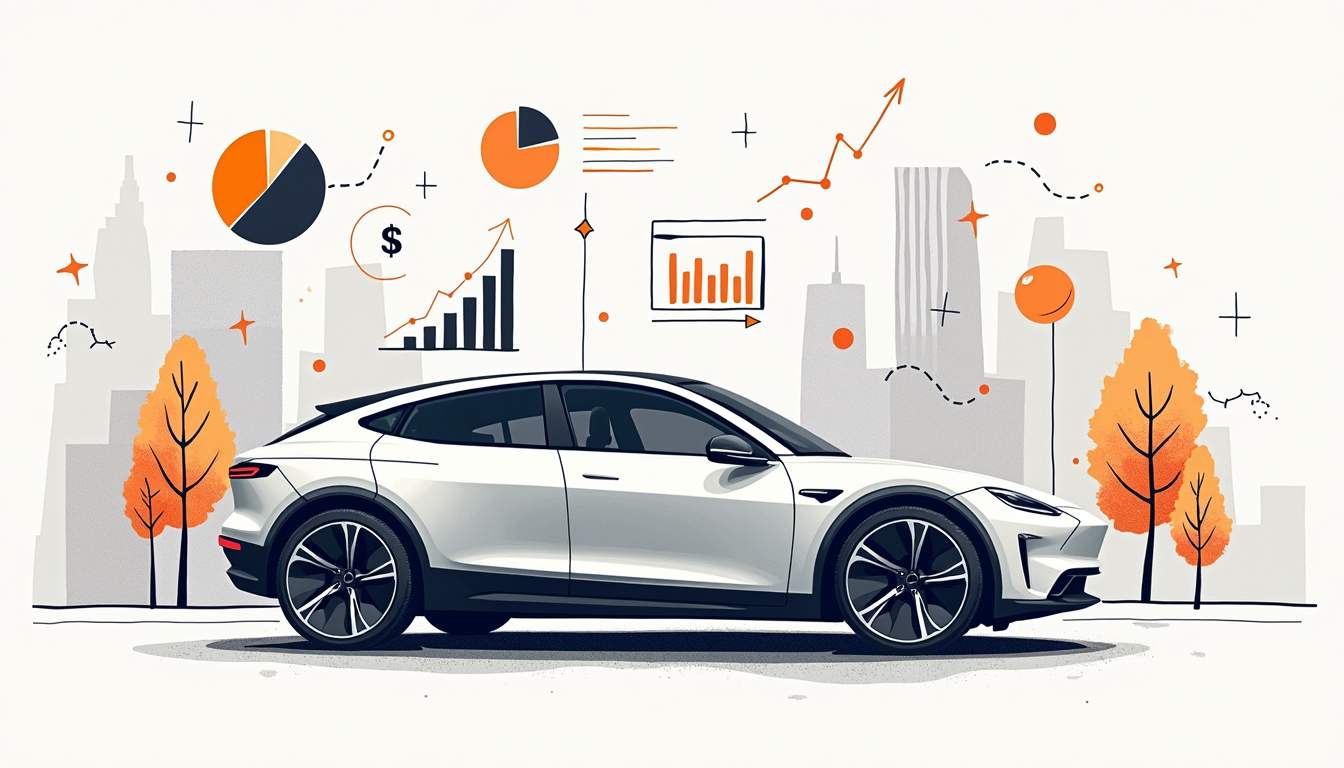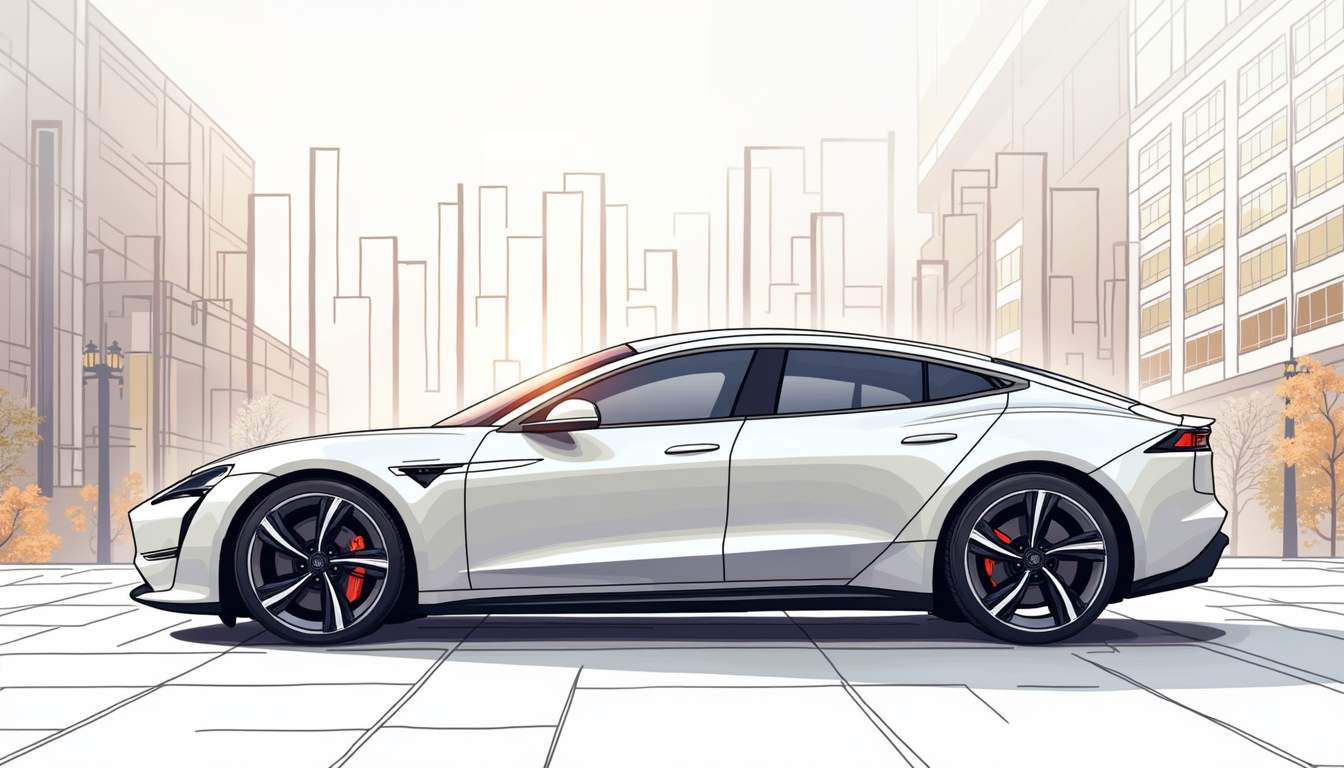In the digital age, advertising has evolved significantly, and social media platforms, such as LinkedIn, have emerged as prominent channels for targeting specific demographics. This article delves into the costs associated with advertising luxury electric vehicles on LinkedIn, providing insights on pricing structures, effective ad strategies, and performance measurement.
Understanding LinkedIn Advertising Costs
When considering LinkedIn for advertising, it’s essential to grasp its pricing framework. Unlike many platforms that use a flat rate or simplistic pricing model, LinkedIn employs a nuanced approach that is influenced by various factors.

Breakdown of LinkedIn’s Ad Pricing Structure
LinkedIn charges advertisers based on several models, primarily focusing on cost-per-click (CPC), cost-per-impression (CPM), and cost-per-send (CPS) for Sponsored InMail. Here’s a brief overview of each model:
- Cost-Per-Click (CPC): Advertisers pay each time a user clicks on their ad. This model is effective for driving traffic to your website.
- Cost-Per-Impression (CPM): In this case, payment is made based on the number of times the ad is viewed, usually measured in thousands of impressions.
- Cost-Per-Send (CPS): This is a unique model for Sponsored InMails, where advertisers pay for each message sent to a user, making it particularly useful for targeted outreach.
The price range for LinkedIn ads can vary widely, but typically, CPC rates can fall between $2 to $7, CPM rates may range from $5 to $15, and CPS can start around $0.50 and go higher based on targeting criteria.
Factors Influencing the Cost of LinkedIn Ads
Several factors contribute to the final cost of your LinkedIn advertising campaign, including:
- Target Audience: Narrowing your audience can increase competition and costs, especially in niche markets like luxury electric vehicles.
- Ad Quality: LinkedIn uses a Quality Score similar to Google Ads; higher quality ads cost less per engagement.
- Bidding Strategy: Your chosen bidding method—automated versus manual—can affect your costs.
- Geographic Targeting: Ads aimed at high-value regions generally incur higher costs due to increased competition.
Understanding these variables is crucial for budgeting your advertising campaigns effectively. Additionally, the timing of your campaigns can also play a significant role in determining costs. For instance, launching ads during peak business seasons or major industry events can lead to higher competition, thus increasing prices. Conversely, off-peak times may offer more cost-effective opportunities for advertisers looking to maximize their budget.
Moreover, the type of content you choose to promote can influence engagement rates and, subsequently, costs. High-quality visuals, compelling copy, and clear calls-to-action can enhance ad performance, leading to better results at lower costs. It’s also worth noting that A/B testing different ad formats and messages can provide valuable insights into what resonates best with your target audience, allowing for more strategic spending in future campaigns.
Advertising Luxury Electric Vehicles: Why LinkedIn?
Advertising luxury electric vehicles on LinkedIn is advantageous due to the platform’s professional and affluent user base. LinkedIn provides an environment that fosters connections between brands and industry professionals, making it ideal for high-ticket items.
The Appeal of LinkedIn’s Professional Audience
LinkedIn’s user demographics are characterized by a significant percentage of business professionals and decision-makers who have a propensity for higher income. These individuals are often in the market for premium products, including luxury electric vehicles.
When your ads reach this audience, they are more likely to engage with your brand positively, leading to increased interest in both the vehicle and your company. With targeted campaigns, you can effectively reach marketing managers, CEOs, and other influential roles keen on sustainable luxury options.
Moreover, the professional nature of LinkedIn encourages users to seek out products that align with their values and lifestyle choices. Many affluent professionals prioritize sustainability and innovation, making luxury electric vehicles an attractive option. By crafting messages that resonate with these values, brands can create a deeper emotional connection with potential buyers, enhancing brand loyalty and driving sales.
LinkedIn’s Role in Luxury and Tech Market
LinkedIn has a strong foothold in industries related to technology, engineering, and innovation, sectors closely connected to the electric vehicle market. By leveraging this landscape, luxury electric vehicle manufacturers can effectively position themselves where tech-savvy consumers are most active.
Additionally, the platform enables brands to showcase their vehicles through a professional lens, emphasizing innovative features, sustainability practices, and cutting-edge technology—all essential components in today’s luxury market.
Furthermore, LinkedIn’s unique content-sharing capabilities allow brands to distribute thought leadership articles, case studies, and white papers that highlight advancements in electric vehicle technology. This not only positions the brand as an industry leader but also educates potential customers about the benefits and features of luxury electric vehicles. Engaging content can spark conversations among professionals, further amplifying brand visibility and credibility within a community that values informed decision-making.
Creating Effective Ads for Luxury Electric Vehicles on LinkedIn
To maximize engagement and conversions, crafting compelling advertisements is vital. This involves a combination of creative messaging and suitable ad formats.
Crafting a Compelling Ad Message
Your ad message should resonate with the high-value audience you wish to attract. Highlighting unique selling points—such as sustainability, cutting-edge technology, or exclusive features—can differentiate your luxury electric vehicle from competitors.
Moreover, using captivating visuals and precise language can enhance the perception of luxury and exclusivity, essential for engaging a target demographic that values both sophistication and environmental responsibility. Incorporating testimonials from industry experts or satisfied customers can further bolster your message, providing social proof that reinforces the quality and desirability of your vehicle. Additionally, emphasizing the lifestyle associated with owning a luxury electric vehicle—such as eco-consciousness, innovation, and status—can create a more profound emotional connection with potential buyers.
Selecting the Right Ad Format for Your Vehicle
LinkedIn offers various ad formats that can be tailored to showcase luxury electric vehicles effectively:
- Sponsored Content: This native ad format blends seamlessly into the LinkedIn feed and is excellent for storytelling.
- Carousel Ads: Featuring multiple images, these ads allow users to swipe through different vehicle models or features.
- Video Ads: A dynamic option to showcase the vehicle in action, video can highlight driving performance and luxury features.
Experimenting with various formats can help identify what resonates best with your audience and drives engagement. Additionally, leveraging LinkedIn’s targeting capabilities—such as job title, industry, and company size—can ensure your ads reach the most relevant audience. For instance, targeting executives in tech or finance sectors can be particularly effective, as these individuals are often early adopters of innovative technologies and may have the disposable income to invest in luxury electric vehicles. Furthermore, incorporating interactive elements, such as polls or quizzes, can engage users more deeply and encourage them to share their preferences, creating a two-way dialogue that enhances brand loyalty.
Optimizing Your LinkedIn Ad Budget for Luxury Electric Vehicles
Effective budget management is crucial for the success of your advertising campaign. A detailed understanding of your financial limits and objectives will help in crafting a sound strategy.

Setting a Realistic Advertising Budget
Begin by analyzing past performance and competitor spending to set a practical budget. Consider allocating funds based on your goals, whether they are generating leads, brand awareness, or sales conversions.
It’s also wise to ensure that your budget allows for flexibility so you can respond to real-time campaign performance analytics and adjust expenditures accordingly. Additionally, keep in mind the cyclical nature of the luxury electric vehicle market; certain times of the year may yield higher engagement rates, such as during major auto shows or when new models are launched. By aligning your budget with these peak periods, you can maximize your ad visibility and effectiveness.
Strategies for Maximizing Your Ad Spend
To get the most out of your LinkedIn ad budget, consider the following strategies:
- Utilize A/B Testing: Experiment with different ad copies and formats to identify what yields the best return on investment.
- Optimize Targeting: Regularly refine your audience targeting to ensure you’re reaching the most relevant potential customers.
- Leverage Retargeting: Use retargeting strategies to re-engage users who have previously interacted with your ads or website.
By leveraging these techniques, you can increase engagement while keeping costs in check. Furthermore, consider incorporating high-quality visuals and compelling storytelling in your ads to resonate with your audience. Luxury electric vehicles often evoke strong emotional responses; showcasing their innovative features, sustainability, and luxury lifestyle can create a more profound connection with potential buyers. Additionally, engaging with your audience through LinkedIn’s native video ads can enhance your storytelling efforts and capture attention more effectively than static images alone.
Measuring the Success of Your LinkedIn Ads
The final piece of the puzzle is evaluating your campaign’s effectiveness. LinkedIn provides robust analytics tools to monitor performance metrics.

Understanding LinkedIn’s Ad Analytics
LinkedIn’s Ad Manager offers insights that help track the performance of your ads in real-time. Key metrics to focus on include:
- Click-Through Rate (CTR): This indicates how effective your ads are at generating interest.
- Engagement Rate: This metric reflects how users interact with your content.
- Conversion Rate: Measuring how many users took the desired action post-click is critical for assessing ROI.
Regularly reviewing these metrics allows you to make data-driven decisions and refine your future campaigns.
Key Performance Indicators for LinkedIn Ads
Moreover, establishing clear key performance indicators (KPIs) aligned with your advertising objectives is essential. Consider tracking:
- Lead Generation: How many leads were generated?
- Sales Conversions: Did your ads directly lead to vehicle inquiries or purchases?
- Brand Awareness: Has your brand’s visibility increased among your target demographic?
By consistently measuring these factors, you can effectively gauge the success of your LinkedIn advertising efforts and adapt accordingly for future campaigns.